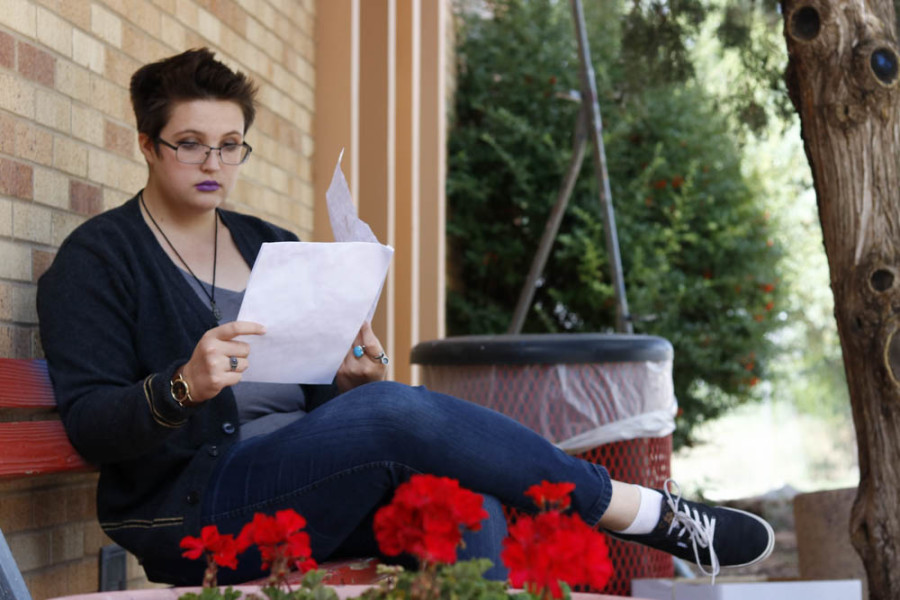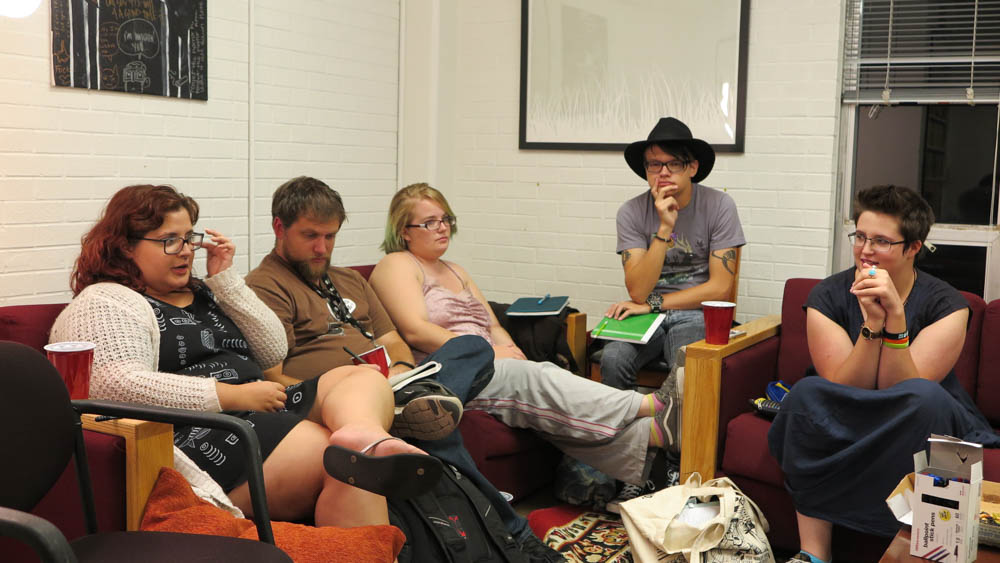Tags
Related Posts
Share This
SWA Welcomes Writers Back
Every Tuesday night in a cozy Alexis Hall lounge, members of the Student Writers Association gather to de-stress, improve their craft, and forge new friendships. SWA is the Creative Writing department’s flagship club, led by officers Amaya Hoke, Andrew Koss, Charlotte Renken, and Kylie Yockey. Though it’s commonly thought that writers choose to work in isolation, SWA aims to break that mold of thinking. A collaborative effort from current students, the SWA members cultivate a community in which writers receive critique from their fellows, explore different genres through writing exercises and find support from their peers. “It’s about creating a community and bettering ourselves as writers,” Renken says.
On the especially rainy night of Sept. 6, students huddle around a coffee table, each a little drained from the first few days of classes. Even so, the room hums with conversation until Koss heralds the start of the meeting with boxes of pizza. Students swarm to compete for a slice. In between bites or reaching for a cup of Sprite, each attendee makes introductions to the group. This moment is critical for setting the tone of the club. “We want to make sure that everyone knows the person next to them,” Hoke explains. Indeed, the atmosphere is warm and welcoming to new voices as Hoke launches the group into a discussion about writing memorable characters. Students offer up thoughts and bounce ideas off each other, especially as they hone in on what makes characters forgettable. The volume of the discussions grows as more literary sins are thrown in. Examples are gleefully offered up until the conversation segues into a writing exercise, which serves as both an introduction to the group and an example of interesting character descriptions. Silence reigns as concentration falls to the pages before them, as the officers set a timer to signal the end of the writing period.
SWA’s four officers share the task of organizing discussion topics, choosing writing exercises, and planning events that range from open mics, mountaintop readings, and writerly sleepovers. First and foremost, though, they aim to be there for students coming to them with questions. Koss emphasizes the importance of being available to new students coming to them with questions. This goal is supported by the mentor/mentee program, in which older students are paired with newer students. Though the program was absent last year, Hoke emphasizes how successful it was previously in creating new relationships between members and adds that “if mentees are willing, the mentors are always going to be there.” Renken agrees with this, adding that a mentor is “someone you know has got your back, as an artist, as a person, as a student.” Hoke mentored Yockey and Koss in 2014, a positive experience that contributes to efforts to bring the program back.
Other additions to SWA’s lineup this year include revision sessions around midterms and finals for students looking for improve their portfolios. The club also aims to hold more student-run seminars, the focus of which is open to suggestions. “We’re always open to people submitting ideas,” Renken says. “Talk to one of the officers.”
Similarly, though it looms in the distant future, Hoke adds that SWA would love to do another event for the Outdoor Vision Fest. “If you love collaborative work, if you love writing and visual together, come to us,” she says. “We want to hear it. We want to make it happen.” Perhaps more than anything, though, the SWA officers says they hope to impassion new students about the club and its place in the department, so that when the current officers graduate, new members care enough to invest their time into running the club.
As the timer beeps, students lift their heads, nervous but prepared to share their work. This is how writers learn, from each other and from trying their hand at new writing elements. Every writing exercise can be formatted for any genre, from poetry to nonfiction to screenwriting. “We try to be good about maintaining all areas,” Yockey says of the exercises. As students read their black ink scribbles against lined paper, genre seems to have no bounds for what each piece has to say. Before long, the evening draws to a close, and after a brief reminder about upcoming events, everyone goes their separate ways, counting down the days until the next Tuesday.











 Jackalope Magazine is the student magazine of Santa Fe University of Art and Design. Building on the interdisciplinary nature of our education, we aim to showcase the talent of our university and character of our city.
Jackalope Magazine is the student magazine of Santa Fe University of Art and Design. Building on the interdisciplinary nature of our education, we aim to showcase the talent of our university and character of our city.
0 Comments
Trackbacks/Pingbacks